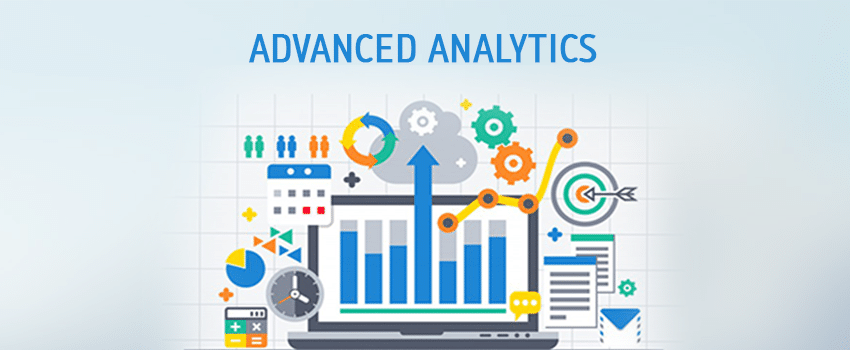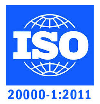Advanced analytics is the method of extracting information from data and then analyzing it to get meaningful conclusions and insights. It is a process where data mining, reporting, and analysis are combined to transform large amounts of information into useful information. The entire process is computerized. It is an approach to analyzing data and identifying insights that are not readily apparent. Advanced analytics has been around since the late 1900s when computers have started to be used in business. It is a collection of tools and technologies designed to support complex and data-driven decisions, based on customers’ behaviors and preferences.
Advanced analytics can be used in the fields of enterprise resource planning, fraud detection, data mining, customer relationship management, customer intelligence, and competitive intelligence.
In most cases, advanced analytics involves more complex processes than traditional analytics to uncover deeper insights to meet business goals.
How Advanced Analytics is different from Big Data
BI (Business Intelligence) is the practice of using advanced analytics to answer business questions. It’s a method of data collection, transformation, and analysis that is used to gain a business advantage. Unlike analytics, BI is a business function that a business can do itself. The term “Big Data” refers to the use of large amounts of high volumes of data in order to answer a business question.
BI and advanced analytics have a lot in common. Both can provide insights into the performance of a business. However, they have distinct focuses and purposes, as well as different methods for obtaining results. BI is focused on providing information and insights about the performance of a business, whereas advanced analytics is focused on providing insights about how to improve that performance. The main difference between advanced analytics and BI is the use of advanced analytics to turn data into information and answer a business question.
Different types of Advanced Analytics
The terminology advanced analytics covers almost every technique of analytics that goes beyond the reach of business intelligence. Several common advanced analytics techniques are explained below:
Predictive Analytics
Predictive analytics is the process of using data to identify patterns and behaviors that are likely to occur in the future. The process involves using algorithms and statistical techniques to sift through historical data and predict future trends. Predictive analytics is used in numerous fields, including finance, insurance, retail, and healthcare.
Prescriptive Analytics
Prescriptive analytics is a model based on the assumption that the user can be made to automatically produce information that is both useful and important to the user. It is used to derive insight from data and is used to manage the flow of information among multiple users.
Machine Learning
It is a field of computer science that gives computers the potential to master without being explicitly programmed. It is very similar to computational statistics, thus also focuses on prediction-making through the use of computers. Machine learning is used in a wide variety of applications, including computer vision, speech recognition, natural language processing, machine translation, bioinformatics, drug design, cheminformatics, text mining, spam filtering, and many others.
Data Mining
Data mining is the process of discovering patterns and trends in large data sets. The discovery is accomplished through a series of algorithms that are designed to find relationships, outliers, and trends in data. Data mining can be used in many different fields, such as finding patterns in the stock market to help investors make decisions, or in genetics to help doctors find patterns in the DNA of their patients.
Uses of Advanced Analytics
It is a new technology that can be used in any area of business. It can help you to solve problems and take action. You can start to use advanced analytics by applying your existing data, and analyzing it. This can then give you a better understanding of your data and inform decisions that will improve your business. Companies have found that advanced analytics has given them the ability to predict and avoid business problems, increase sales, and make better business decisions.
Advanced analytics can be used in various industries and across various industries such as:
- Advanced analytics is a computerized process that provides a business with valuable insights that it can’t find elsewhere.
- Most commonly, advanced analytics is used to support complex decisions that require the analysis of multiple variables to produce accurate results. One example of this is the use of advanced analytics to support a purchase decision. The main goal of the decision support system is to provide the business with the best possible price/quality/service/whatever combination.
- Advanced analytics is also used in the banking sector to provide insight into customer behavior and financial transactions to reduce fraud and improve overall customer satisfaction.
- The healthcare sector uses advanced analytics to improve healthcare delivery and patient outcomes.
- Financial services use analytics to ensure that the financial decisions they make are the right decisions for their customers.
- Advanced analytics are also being used in areas such as marketing, customer intelligence, fraud detection, retail, and risk management.
Conclusion
Advanced analytics is the future of business analytics. In today’s business world, the ability to analyze large volumes of data and make predictions based on this information is becoming increasingly important. Organizations are using advanced analytics to make sense of the massive amounts of data they have collected and to predict future trends that might influence the organization’s bottom line. Many organizations are turning to outside vendors to help manage the large amounts of data they have collected. The demand for this type of analytics is emerging, and there is a high potential for considerable growth. With the growth of big data, there is a greater need for advanced analytics techniques to handle this data.









